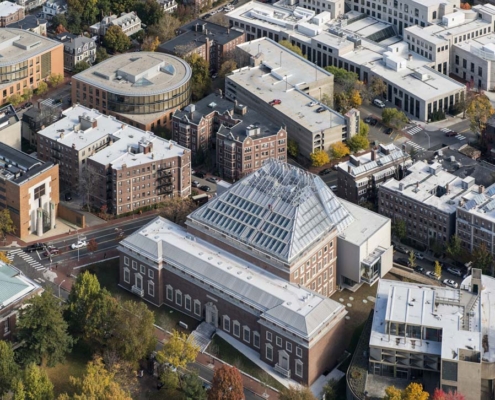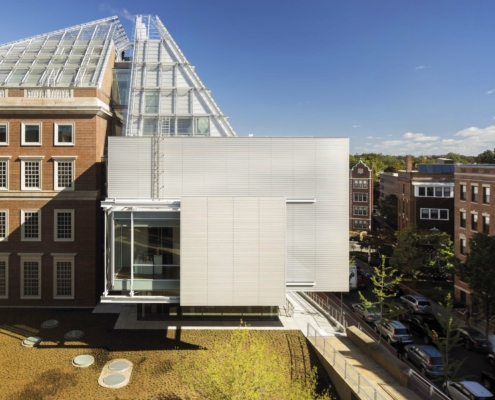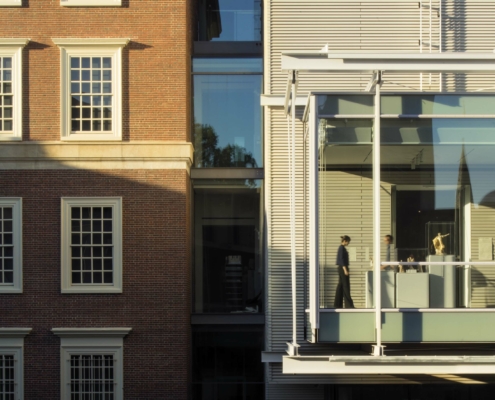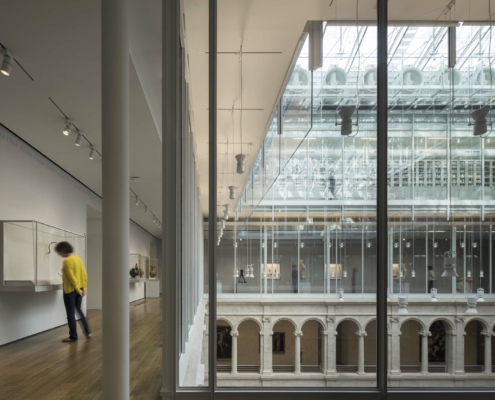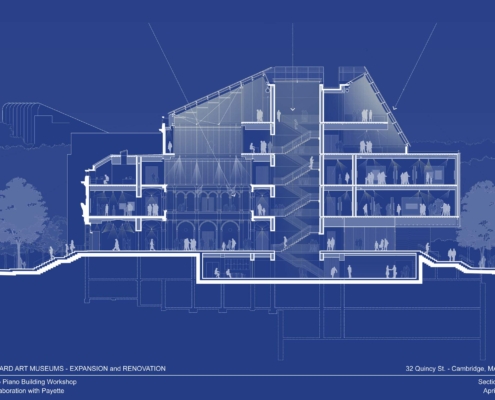Harvard Art Museum Renovation And Expansion
Renzo Piano Building Workshop and Payette | Website | 2014 | Visitor Information
"
As part of Harvard University’s consolidation of their three art museums – the Fogg, the Busch-Reisinger and the Arthur M. Sackler – architecture firm Renzo Piano Building Workshop was hired to create an addition and renovation on the former site of the Fogg Museum on Quincy Street. The restored historic courtyard of the Fogg Museum is at the heart of the 200,00 square foot (18,500 sq.m) new museum space. The new facility combines the Fogg’s protected 1920’s Georgian revival building, with a new addition on its east side, along Prescott Street. A glazed rooftop structure bridges the old and the new. The rooftop addition, designed with sensitivity to surrounding historic structures, allows controlled natural light to enter into the conservation lab, study centers and galleries, as well as the courtyard below. The original 1920’s building by Coolidge, Shepley, Bulfinch and Abbot Architects, was the first of its kind, combining museum space, teaching and conservation in one facility to promote scholarship. Following this tradition, the new centre is designed to make the collection of 250,000 objects more accessible for teaching and learning. All aspects of the historic building – structural, mechanical and technical – are restored and upgraded. Galleries and study centers are significantly expanded; as befits their importance to the mission of the museums, the study centers are at the center of the building on level four. The conservation lab continues to occupy the top of the building, above the study center under the new sloping glazed roof. Public amenities, and support spaces for special events are enlarged and modernized, and include an auditorium of 294 seats on the lower level. While the original entrance faces onto the university campus, a new entrance from Prescott Street symbolically opens the museums to the local community. Views from the interior courtyard through to the entrances on both sides of the building help visitors to orient themselves. At the north end of the extension a winter garden projects beyond the main gallery volume. This and other glazed sections of facade in the first-floor exhibition space allow views into the museums from the street and bring daylight into the building in a controlled way.
"
Information provided in part by: Renzo Piano Building Workshop Architects

